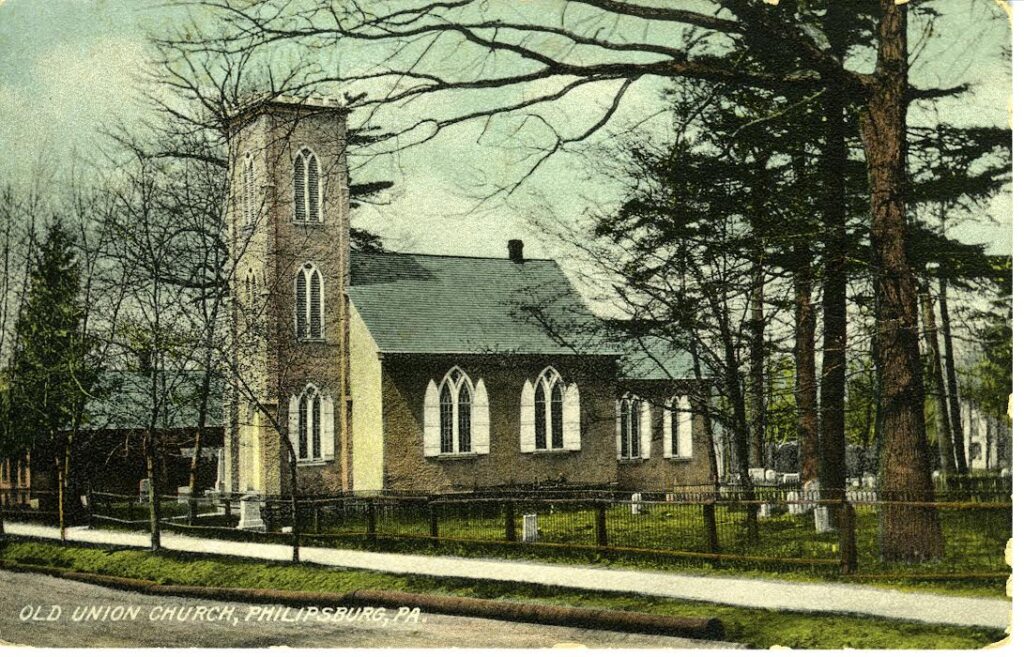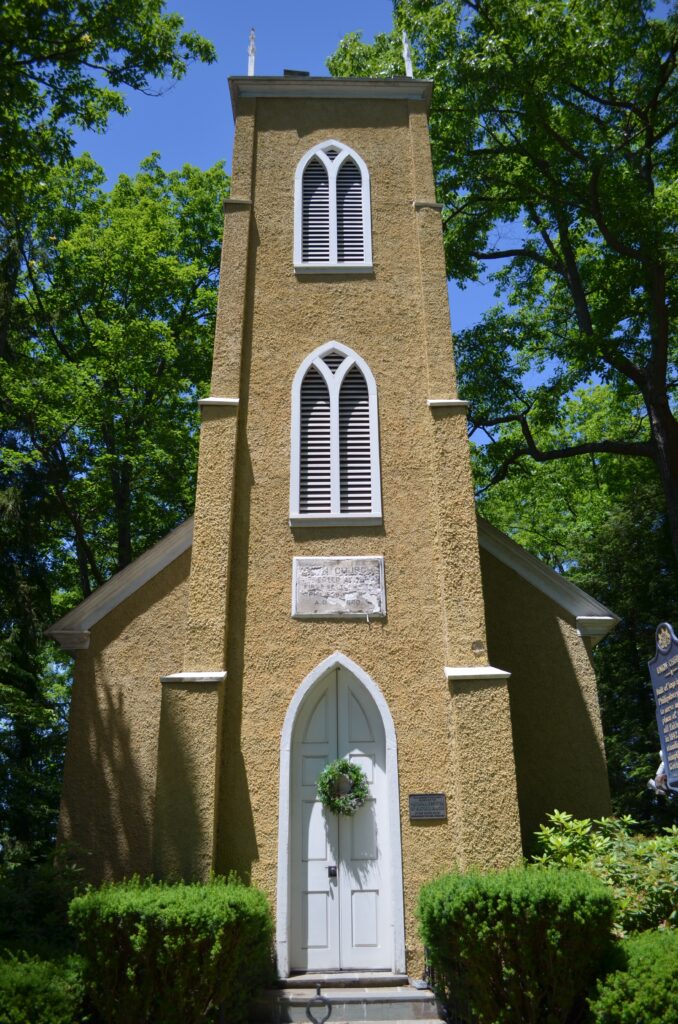The Union Church, better known as the “Old Mud Church,” is a Philipsburg landmark on Presqueisle Street that initially served as the town’s first schoolhouse and place of worship for all denominations.

The site on which the church stands originally belonged to John George Schultz, one of Philipsburg’s twelve original settlers. He received the lot as inducement to settle by Henry Philips, who founded Philipsburg, then called Moshannontown, in 1797.
Henry was followed to the area by his brother Hardman Philips, for whom the borough is named. When settlers needed a cemetery, Schultz allowed them to bury the deceased on the lot. Sometime after Hardman arrived, he sought a burial ground and exchanged properties with Schultz.
In 1820, the settlers decided to build a multipurpose school and meetinghouse. The existing burial ground was the logical choice for the site. Hardman Philips deeded the land in trust for this purpose on November 12, 1820.
Fifty-seven subscribers raised $343 for the church, with Hardman giving the most, $75. The original subscription list is preserved at the church.
In 1842, Hardman decided to enlarge the building. The original log structure was contained, in part, in the remodeled Union Church. Structural changes included the addition of the crenellated square tower, rear wing, and Gothic windows. A mixture of plaster and clay stucco was used to cover the building and it became known as the “Old Mud Church.”

Hardman provided much of the funding and played a big role in the final design of the remodeled church. The church bell, which remains in the tower today, was saved from Hardman’s Philipsburg Screw Factory, one of the first screw factories in the United States.
Hardman wanted to have the structure dedicated as an Episcopal church, but the trustees would not permit his claim to exclusive occupancy. A lengthy lawsuit ensued. Hardman lost in court, and the church and property were turned over to the town of Philipsburg.
See video about the Union Church
The Union Church continued to hold services for different denominations until the early 1920s. Today, the church and cemetery are under the care of the Philipsburg Historical Foundation.
The cemetery contains a monument to Hardman Philips, erected by his widow, as well as the more than 350-year-old “Founders Oak,” considered one of the oldest and largest trees in Centre County. The cemetery’s more than 500 graves include those of a Revolutionary War veteran and thirteen veterans of the Civil War.
The church and cemetery were added to the National Register of Historic Places in 1978. They are part of the Philipsburg Historic District.
In November 1920, a three-day celebration was held to commemorate the 100th anniversary of the church. The COVID-19 pandemic delayed the 200th anniversary celebration, which was postponed until September 18, 2021.
Rebecca Inlow
Sources:
Rowe, S. B. “Historical Sketch of Philipsburg,” Harrisburg Telegraph, January 8, 1898.
“Union Church and Burial Ground,” Our Pioneer Heritage, Philipsburg, Pennsylvania. Philipsburg Historical Foundation, 1976
“Union Church of Philipsburg, the ‘Mud Church,’ Is a Landmark,” The Progress, October 27, 1951.
First Published: August 10, 2021
Last Modified: April 25, 2024
